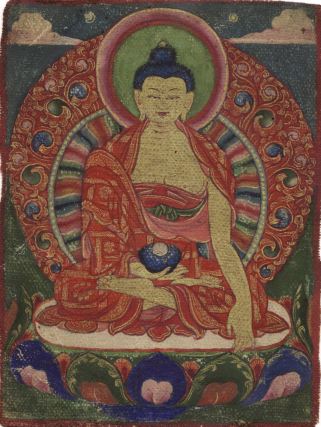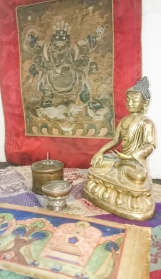With the Chinese antiques market thoroughly picked over in the last few years, collectors with deep pockets have instead been turning their attention to the field of Buddhist antiques to fuel their passions. Of particular interest are the mid to high level gilt bronzes and Thangka scroll paintings of the East Asian and Himalayan regions, especially those with Chinese connections.
To those who know the field, the collecting shift is unsurprising. Despite the recent political opposition to Buddhism by the Chinese authorities, the art history of 17th – 19th Century Asia is largely dominated by the workshops and travelling artisans of Buddhist Imperial China. For those Chinese individuals, digging deep to repatriate their ancestors greatest achievements, its hard to overlook this fact for long.
The first signs of a price explosion occurred a year ago at the 2014 US Asia Week which focuses around the big three auction houses in NY. Prices are always a little inflated for these things, but a good number of items astounded even the auctioneers as they soared far in excess of their estimates. One collector I know in NY put it into perspective for me. He reminded me that with most of the very top level items already tucked away safely into museum collections, this latest wave of private individuals are having to fight instead over a pretty limited offering. Indeed in November 2014 a 15th Century embroidered thangka with direct links to the Emperor, set a new world record of $45 million dollars making it the most expensive Chinese work ever to sell at auction.
The surge of course has not gone unnoticed. Flick through any antique trade magazine currently and it will be littered with Buddhist statues and paintings offered by auction houses up and down the country. For the novice buyer on any continent I feel a twinge of sorry for them as trawling through a list of upcoming auctions the other day I spotted a good number of offerings which I felt had errors either in date, country or attribution of the deity. While it is unsurprising that many of our general auctioneers don’t have much experience with the vast Buddhist pantheon, with the rising values it is certainly a field that demands due diligence.
Unlike our western tradition that has always promoted self-expression and stylistic progression, Buddhist art at its core is primarily a teaching tool that relies on exact repetition to maintain the purity of its message. Therefore, except in a few rare cases (such as depicting living teachers), exact and unsigned repetition has always been expected. This is not to say that there are no differences across time and space, just that they are slower to appear and less geographically confined than we would hope. Spotting these subtleties can be a very refined art. To give an example, while Chinese-painters often preferred a more vibrant colour range (even psychedelic at times) this can’t be a rule. Artisans travelled constantly across borders to work and teach so cross-pollination was rife. The appraiser instead will combine a host of other subtle signs such as Chinese-like facial bone structures and more craggy background scenery (compared to the softer hills found in Tibetan and Mongolian paintings) to make any firm attribution. Add to all this subtlety the mass of relatively modern (but now worn) tourist copies and outright fakes that have emerged since the hippy surge of the 1960’s and you can see why we should all be treading carefully.
There is a part of me that is excited for this surge in the market. I’ve had a vested interest in the Buddhist art of the Himalayan region for over a decade now. Having lived for several years in Mongolia I had the unique privilege to handle some amazing items as well as interview the modern masters who still produce them. Perhaps as the public profile of these intrinsically beautiful items grows, it might lead some in China to rethink their political stance towards Tibet…….but perhaps for now I’m being over optimistic.
In contrast to the benefits, there is also a part of me that sits uncomfortably around the subject. At their heart these objects were devotional and intended for teaching only. Despite years of rigorous training, most artwork would remain unsigned to ensure the artisan did not pick up any bad karma through false pride. Indeed while some chose to produce works using a factory-like efficiency, others would dedicate years to a single piece repeating prayers and meditating upon each brushstroke or mold mark.
If the new surge in interest in Buddhist art spawns greater appreciation and understanding about the lifelong dedication and skills of the artisans who created these antique works, then that’s fantastic……but if they just become another place to store tax-free Asia’s new found wealth, then I think its time to question our motive as collectors.
ratnasambhava thangka photo and standing bronze statue photo attributions: both by cea+


